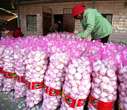-
-
China Daily E-paper
Reports
World Bank: China's economy continues to grow robustly
(World Bank)
Updated: 2009-11-26 16:12
In spite of a large drag on growth from exports amidst the global recession, China's economy continues to grow robustly because of expansionary fiscal and monetary policies, according to the World Bank's China Quterly Report, November 2009.(Full report)
Infrastructure investment has been key but consumption has also held up well.More recently, real estate activity has been recovering as well.
Although,the steep fall of export have been a major drag on growth, simce global economic activity has turned the corner as financial conditions have improved, the situation is getting better.
Related readings:
Driven by the domestic demand, the overall growth held up very well through the third quarter. The domestic demand expansion has been fueled by very large fiscal and monetary stimulus. Fiscal expenditure rose 24 percent in the first 9 months of 2009. In the first half of 2009, new medium and long term lending frastructure rose 42 percent (yoy), contributing more than one-half of the total increase in credit.
 Oil drops nearly 4% on China economy fears
Oil drops nearly 4% on China economy fears China economic figures vote launched
China economic figures vote launched China economic growth needs to be more balanced: expert
China economic growth needs to be more balanced: expert
Resurgent housing sales have started to feed through to construction activity. Following a recovery of property sales and completions earlier this year, growth of floor space started became positive in June and it reached 27 percent (yoy) in the third quarter,after languishing for a year.
The consumption also shows the confidence of buying powers. Sales of scretionary items such as cars and electronic appliances have been particularly strong. Consumption has benefited from falling prices, which have boosted purchasing power, and government measures such as lower consumption taxes for small cars and subsidies for rural consumption of electronic appliances.However, weaker labor market conditions (see below) have dampened income growth.
The global economic activity seems to be recovering and short term global prospects have improved. However, the global recovery is likely to be slow and subject to risks. But the global recovery is likely to be slow and subject to risk.Exports will probably stop being a drag on growth from end-2009 onwards and real estate investment looks set to be stronger.
Based on IMF WEO projections, but adjusted for China’s own imports, imports of the world excluding China are expected to increase 2 percent, after falling 12.8 percent in 2009, in constant prices. Compared to the expected rebound in GDP next year, much less of this year’s decline in imports is projected to be recouped. China is likely to continue increasing global market share in 2010 and beyond, but in a more difficult global environment than before and the medium term outlook for global demand and exports is subdued compared to the recent decade.
However,China is on track to meet the government’s target of 8 percent GDP growth this year. This is led by a projected contribution of domestic demand of almost 12 percent point and despite an expected drag on growth from net trade of 3.4 percentage points. Growth is higher than expected earlier because of larger-than-expected macroeconomic stimulus. Our forecast of 8.4 percent GDP growth for 2009 assumes an increase of 6.8 percent in the fourth quarter (SAAR), which is within reach given current trends.









